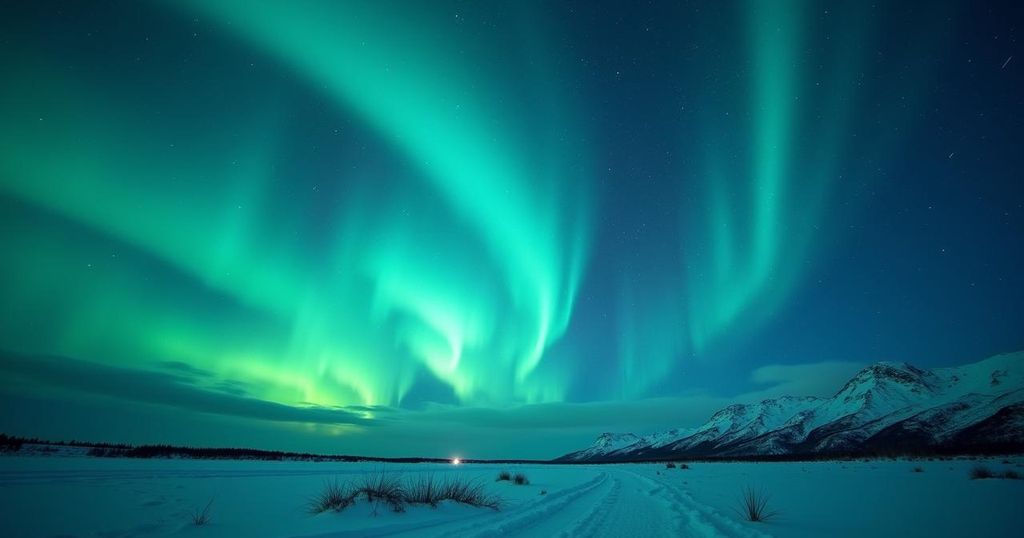Severe Solar Storm Brings Northern Lights to Uncommon Locations Worldwide
A recent severe solar storm led to a spectacular display of auroras across regions far from the poles, including locations in the United States such as New York, Washington D.C., and Texas. This second significant geomagnetic storm of the year resulted from a coronal mass ejection from the sun. The phenomenon delighted sky watchers nationwide, with predictions of more auroral displays in the coming years due to the peak of the solar cycle.
On Thursday night, the world was treated to a stunning display of auroras, which lit up the sky in brilliant hues of purple, red, and green. These atmospheric phenomena, typically visible only in regions close to the Earth’s poles, extended their reach unusually far south into the United States, appearing in cities such as New York, Washington D.C., and even as far south as Texas. This marked the second notably intense geomagnetic storm to impact Earth this year, with a prior storm occurring on May 10 and 11, which was rated a 5 out of 5 on the storm intensity scale, described as “extreme” and considered among the most remarkable in decades—or possibly even centuries. The latest geomagnetic storm resulted from a coronal mass ejection, an event consisting of a significant explosion of solar particles and energy from the sun, which disrupted the protective magnetic field surrounding Earth. This rapid ejection traveled at almost 1.5 million miles per hour, enabling solar particles to ride along the planet’s magnetic field lines into the upper atmosphere. As these particles interacted with nitrogen and oxygen molecules, they released photons of light, resulting in the mesmerizing visual displays associated with auroras. At lower latitudes, red auroras emerged more frequently due to their occurrence at higher altitudes, making them visible from greater distances from the polar regions. The auroras first appeared over Europe, brightening the skies of London and extending into southern France. While there were initial concerns that the light show might diminish before sunset in the United States, it persevered, delighting observers nationwide. Notably, regions that missed the spectacle during the May event, such as Washington D.C., enjoyed the rare opportunity to witness this natural phenomenon. In the D.C. area, the northern lights were visible to the naked eye between approximately 7:10 and 7:25 PM, with enhanced visibility captured through sensitive camera lenses for the remainder of the evening. These powerful geomagnetic storms coincide with the peak of the 11-year solar cycle, a period when solar outbursts such as these are increasingly likely. Experts predict that many more auroral displays will occur in the coming years. As stated by Bob Leamon, a solar physicist at the University of Maryland Baltimore County and NASA, “The next three or four years, we should see some fine displays of aurora. It’s like a whole generation of people discovering something for the first time.”
Auroras, commonly known as the northern lights or aurora borealis, are natural light displays that occur in the polar regions, attributed to the interaction between solar wind and the Earth’s magnetic field. During solar storms, these lights can be observed at lower latitudes, producing spectacular displays of color in the sky. Such phenomena are linked to the solar cycle, an approximately 11-year cycle during which the sun’s activity waxes and wanes. increased solar activity creates more opportunities for auroras to be seen beyond their typical polar latitudes. Scientists track these geomagnetic storms and assess their impacts, as they can disrupt communications and satellite operations but also provide awe-inspiring visual experiences for millions.
In summary, the recent severe solar storm provided a remarkable opportunity for individuals far from the poles to witness the breathtaking phenomenon of the northern lights. The geomagnetic storm, resulting from a coronal mass ejection, produced vivid auroras in unusual locations across the United States, particularly following a similar event earlier in the year. As we inhabit a peak period of solar activity, scientists anticipate that the next few years will yield even more remarkable displays of auroras as the cycles of solar outbursts continue to evolve. It is a thrilling time for those who are captivated by the mysteries of our atmosphere and solar phenomena.
Original Source: www.washingtonpost.com




Post Comment